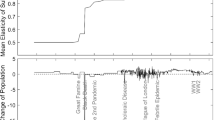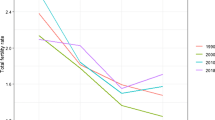Abstract.
Economic and demographic outcomes are determined jointly in a choice-theoretic model of fertility, mortality and capital accumulation. There is an endogenous population of reproductive agents who belong to dynastic families of overlapping generations connected through altruism. In addition to choosing savings and births, parents may reduce (infant) deaths by incurring expenditures on health-care which is also provided by the government. A generalised production technology accounts for long-run endogenous growth with short-run transitional dynamics. The analysis yields testable time series and cross-section implications which accord with the empirical evidence on the relationship between demography and development.
Similar content being viewed by others
Author information
Authors and Affiliations
Additional information
Received: 22 April 1996 / Accepted: 2 April 1998
Rights and permissions
About this article
Cite this article
Blackburn, K., Cipriani, G. Endogenous fertility, mortality and growth. J Popul Econ 11, 517–534 (1998). https://doi.org/10.1007/s001480050082
Issue Date:
DOI: https://doi.org/10.1007/s001480050082




